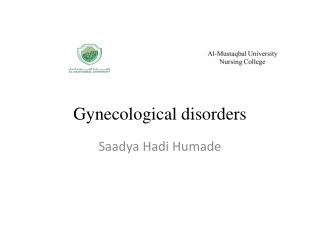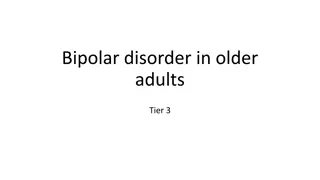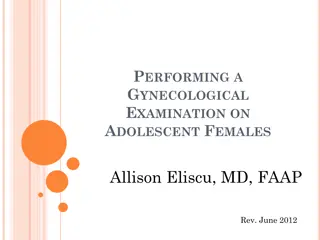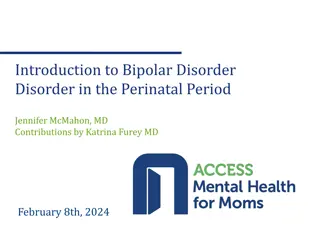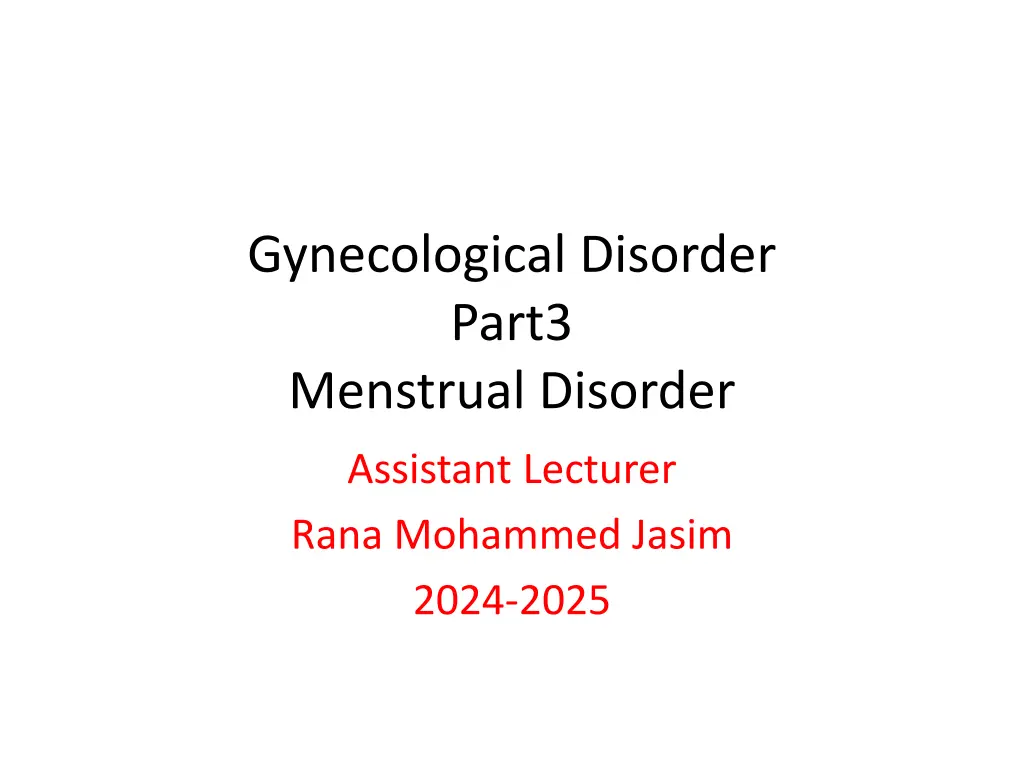
Menstrual Disorders: Types, Symptoms, and Causes
Explore common menstrual disorders like Premenstrual Syndrome (PMS), Amenorrhea, and Dysmenorrhea. Learn about symptoms, types, and causes of these conditions affecting menstruation cycles. Discover how these disorders can impact women's health and daily functioning.
Download Presentation

Please find below an Image/Link to download the presentation.
The content on the website is provided AS IS for your information and personal use only. It may not be sold, licensed, or shared on other websites without obtaining consent from the author. If you encounter any issues during the download, it is possible that the publisher has removed the file from their server.
You are allowed to download the files provided on this website for personal or commercial use, subject to the condition that they are used lawfully. All files are the property of their respective owners.
The content on the website is provided AS IS for your information and personal use only. It may not be sold, licensed, or shared on other websites without obtaining consent from the author.
E N D
Presentation Transcript
Gynecological Disorder Part3 Menstrual Disorder Assistant Lecturer Rana Mohammed Jasim 2024-2025
Menstrual disorder: With each menstrual cycle, the endometrium (uterine lining) prepares itself to nourish a fetus. If fertilization doesn t occur, the body sheds the endometrium during the monthly cycle.
Types of Menstrual Disorders 1-Premenstroal syndrome 2-Amenorrhea 3-Disamenorrhea 4-Menarrahea
Premenstrual Syndrome (PMS) PMS is any unpleasant or uncomfortable symptom during your cycle that may temporarily disturb normal functioning. These symptoms may last from a few hours to many days, and the types and intensity of symptoms can vary in individuals.
PMS Symptoms 1. Psychological symptoms (depression, anxiety, irritability) 2. Gastrointestinal symptoms (bloating) 3. Fluid retention (swelling of fingers, ankles and feet) 4. Skin problems (acne) 5. Headache 6. Vertigo 7. Fainting
Amenorrhea Amenorrhea is characterized by absent menstrual periods for more than three monthly menstrual cycles.
Types of Amenorrhea 1. Primary amenorrhea: Menstruation does not begin at puberty. 2. Secondary amenorrhea: Normal and regular menstrual periods that become increasingly abnormal and irregular or absent. This may be due to a physical cause typically of later onset.
Dysmenorrhea Dysmenorrhea is characterized by severe and frequent menstrual cramps and pain associated with menstruation.
The cause of dysmenorrhea is dependent on if the condition is primary or secondary. With primary dysmenorrheal, women experience abnormal uterine contractions resulting from a chemical imbalance in the body. Secondary dysmenorrhea is caused by other medical conditions, most often endometriosis. Other possible causes may include: 1. pelvic inflammatory disease (PID) 2. uterine fibroids 3. abnormal pregnancy (i.e., miscarriage, ectopic) 4. infection, tumors, or polyps in the pelvic cavity
Dysmenorrhea Symptoms The most common symptoms may include: Cramping or pain in the lower abdomen Low back pain or pain radiating down the legs Nausea Vomiting Diarrhea Fatigue Weakness Fainting Headaches
Menorrhagia: is the most common type of abnormal uterine bleeding and is characterized by heavy and prolonged menstrual bleeding. Menorrhagia Causes There are several possible causes of menorrhagia, including: 1. Hormonal imbalance 2. Pelvic inflammatory disease (PID) 3. Uterine fibroids 4. Abnormal pregnancy; i.e., miscarriage, ectopic (tubal pregnancy) 5. Infection, tumors or polyps in the pelvic cavity
Polymenorrhea: Too frequent menstruation. Oligomenorrhea: Infrequent or light menstrual cycles Metrorrhagia: Any irregular, non-menstrual bleeding as in bleeding which occurs between menstrual periods Postmenopausal bleeding: Any bleeding that occurs more than one year after the last normal menstrual period at menopause

